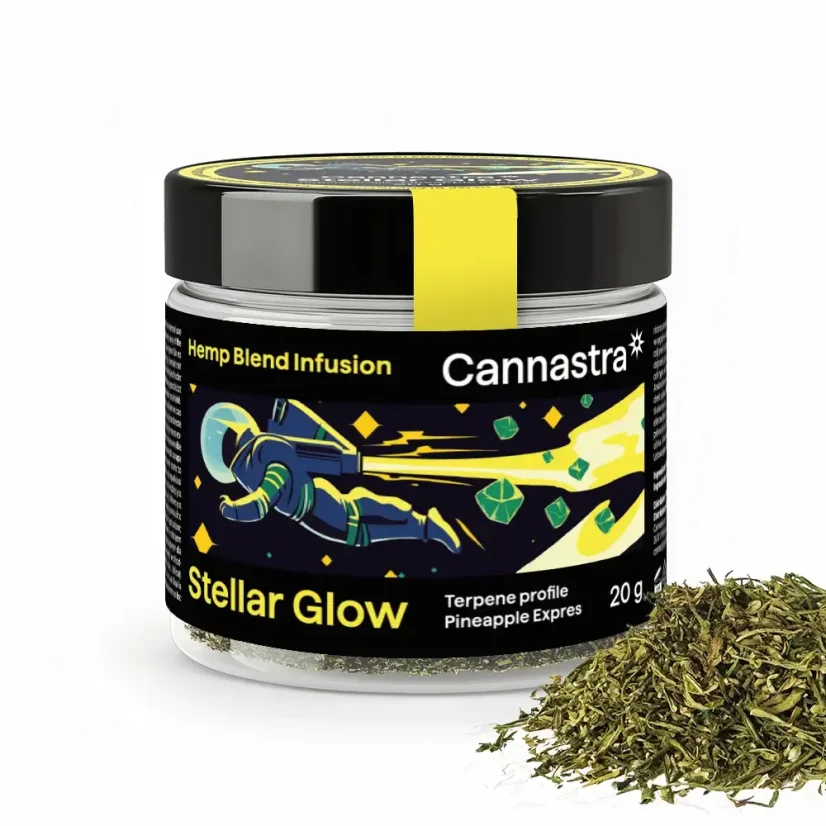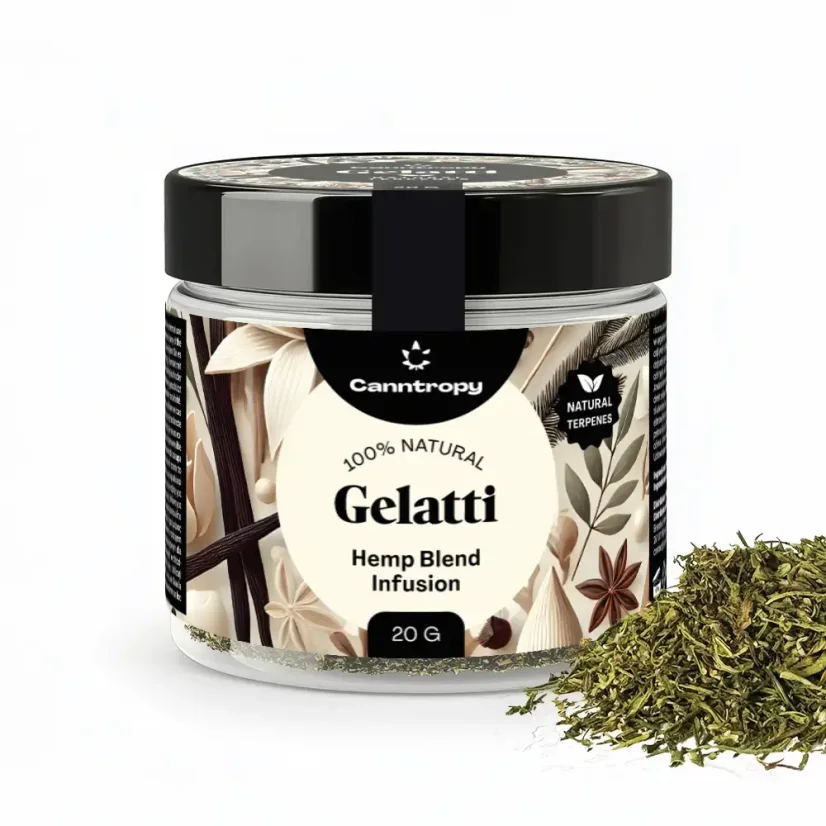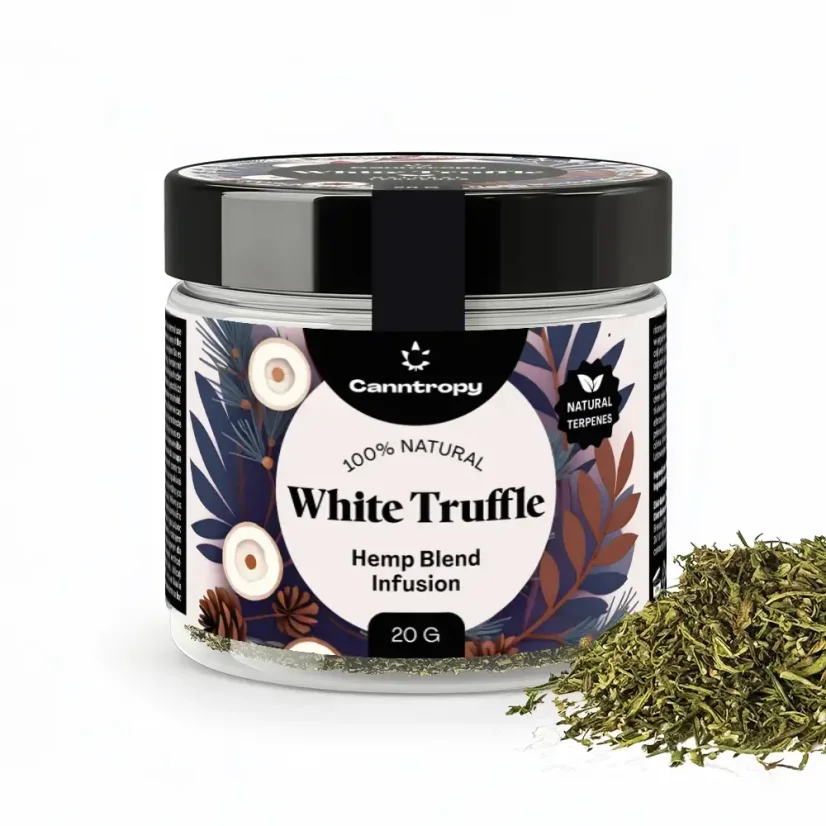Our hemp blends View all
🌿 What are hemp leaves - and what's in them?
When you think of hemp, most people immediately think of the Flowers - logically, because that's where most of the THC is. But the leaves? They often lead a shadowy existence. Quite wrongly, as it turns out.
Premium hemp leaves are like the underrated cousins of the famous Flower - inconspicuous, but packed with exciting ingredients. Depending on whether it's industrial hemp (i.e. low-THC varieties) or THC-containing plants, the leaves contain different amounts of cannabinoids. At the forefront: cannabidiol (CBD) - the gentle, non-intoxicating cannabinoid that has rightly experienced a hype in recent years.
But it doesn't stop there: premium hemp leaves also contain CBD:
- 🌱 Flavonoids (have an antioxidant effect)
- 🌱 Terpenes (responsible for odour & aroma)
- 🌱 Chlorophyll & dietary fibre
- 🌱 Vitamins & minerals
What does that mean?
Quite simply: premium hemp leaves are more than just green waste. They are a real all-rounder - whether as tea, in the kitchen or even in natural cosmetics.
A small comparison: if the hemp flower is the rock star of the plant, then the leaves are the creative songwriter in the background - not quite as loud, but full of substance. And depending on how you use them, they can relax you, support your digestion or simply provide a new flavour experience.
🍃 Drying hemp leaves
Freshly picked, hemp leaves exude that typical, slightly earthy scent reminiscent of warm summer days. But if you really want to use them - whether for tea, cosmetics or other creative ideas - you first have to dry them properly. And no, simply putting them on the radiator or forgetting them in the sun doesn't work.
Drying is all about preserving the valuable ingredients without allowing mould or unpleasant odours to spread. It's a bit like herbal tea from grandma's garden: with patience, the right place and a little finesse, the fresh leaf becomes a long-lasting natural product with character.
Ideally, you should look for a shady, well-ventilated place. Cellar? Too damp. Windowsill in the blazing sun? Too aggressive. The perfect environment is somewhere in between - airy, dry and without direct UV radiation. And then it's time to hang it up, wait, sniff it. When the leaves crackle slightly when crushed and can be rubbed well, they are ready for their next life - whether in tea, in a cooking pot or in your homemade skincare cream.
The right humidity plays a crucial role here. If it is too humid, mould will form. If it is too dry and too hot, the aroma and effects will be lost. So you could say that drying hemp leaves is a bit like baking good bread - simple in theory, but with a big difference in the result, depending on how much love you put into it.
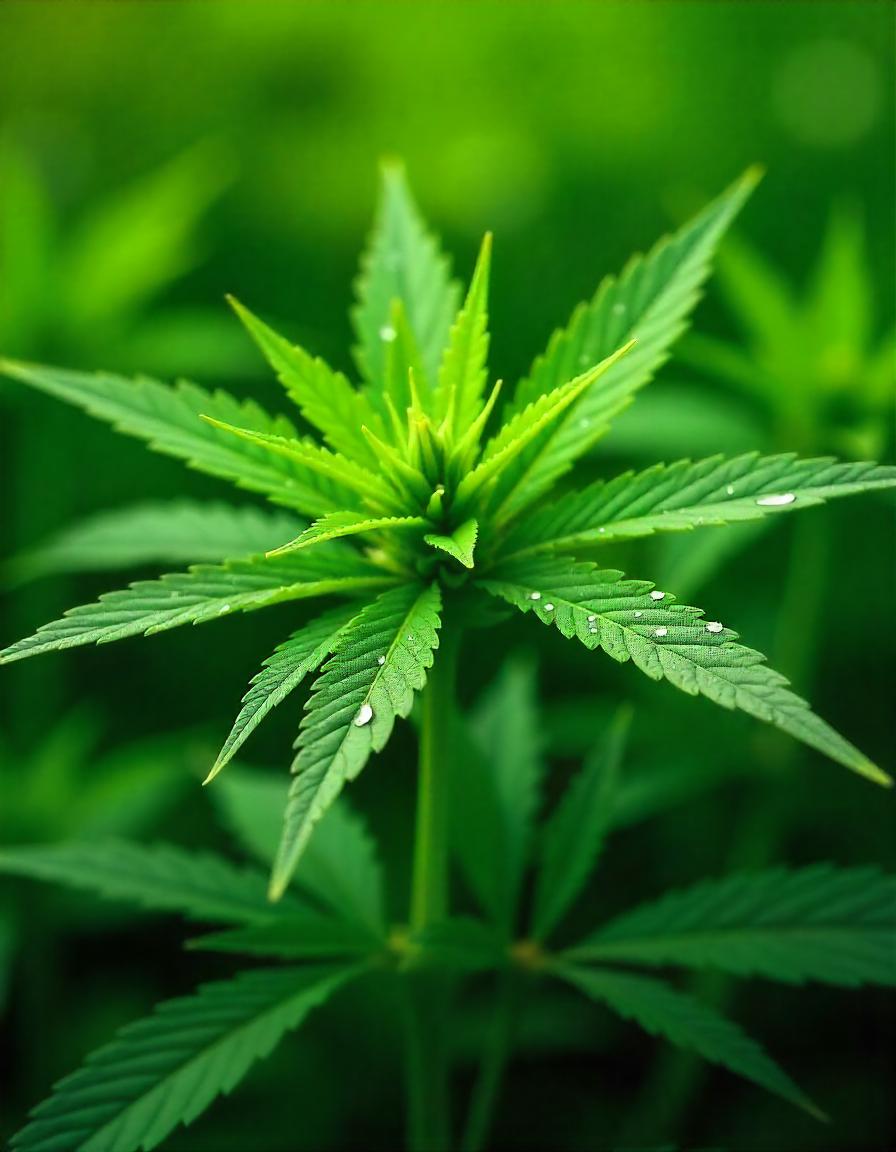
🍵 Hemp leaves as tea: Gentle effects with depth
There are those days when you just want to put the world on pause. A moment of peace, a deep breath, a cup of tea - and this is exactly where hemp leaves come into play. As a tea, they unfold their effects in their very own, quiet way. Not loud, not overwhelming, but gentle, calming and somehow grounding.
The flavour is somewhat reminiscent of a mixture of green tea and a walk in the woods. A little tart, slightly grassy, sometimes with a hint of sweetness - depending on how fresh or well-dried the leaves are. If you like, you can add a little lemon or mint, but the tea tastes just as special on its own.
And the effects? Most people report a pleasant sense of relaxation. Not a high, but rather an inner calming effect. Some people drink hemp leaf tea to help them fall asleep, others for stomach ache or simply to help them feel at peace again after a hectic day. The cannabinoids it contains - especially the non-intoxicating CBD - gently support the body without overtaxing it.
The tea is very easy to prepare: chop up the leaves, pour hot (not boiling!) water over them and leave to infuse for around 10 to 15 minutes. If you want to intensify the effects, you can add a dash of plant milk or a small piece of butter - fat helps the fat-soluble active ingredients to be better absorbed.
Hemp leaves as tea are a bit like a good conversation around the campfire: calming, honest and deep - without much fuss, but with a resonance.
💨🌿 Smoking or eating hemp leaves - what's the real benefit?
The idea sounds logical to many at first: if the hemp plant has an intoxicating effect, then surely the leaves do too, right? It's not quite that simple, because anyone hoping for a effects like the classic Joint will be disappointed when smoking hemp leaves.
Hemp leaves do contain cannabinoids, especially traces of THC and CBD, but significantly less than the Flowers. If you smoke them pure, the effects usually remains very subtle - a bit like an herbal cigarette, which may have a relaxing effect but is definitely not "high". The smoke itself is also rather scratchy and nowhere near as aromatic as that from Flowers. It feels a bit like smoking the supporting actor while the star stays backstage.
Raw hemp leaves are packed full of nutrients, antioxidants and chlorophyll. If you mix them into smoothies or sprinkle them over your food in small pieces, you get a portion of superfood for free - without the high, but with added health benefits. What's more, in their raw form they mainly contain THCA and CBDA, the non-psychoactive precursors of THC and CBD. Only when heated do they become what many consider to be "effective".
In short: smoking hemp leaves is possible, but rather symbolic, whereas eating them has real potential - provided you know what you're doing and don't expect miracles, but nature in its most honest form.
🛒 Buy hemp leaves
Once you've acquired a taste for hemp - whether for tea, cooking or simply as part of a natural lifestyle - you'll soon ask yourself: Where can I get good hemp leaves? And more importantly, what should I look out for when buying them?
The market is growing, but so are the differences. There are loose dried leaves, finely chopped varieties for tea or even fresh hemp leaves straight from the field - provided you live near a hemp farmer. But not everything that shines green is of high quality.
Ideally, the leaves should come from controlled organic cultivation, without pesticides or artificial fertilisers. Because what counts for fruit and vegetables also applies here: what's in the plant ends up in your body. This is particularly important for teas or when eaten raw.
Another topic: THC content. In Germany, only hemp varieties with a THC content of less than 0.2 % may be sold - so-called industrial hemp. This is guaranteed not to get you high, but is legal, versatile and safe to use. So when buying, look for the label "EU industrial hemp" or similar.
And then there's the packaging, which may sound unimportant, but is crucial for flavour and shelf life. It's best to store hemp leaves in an airtight, light-protected and dry place after purchase - this will preserve their flavour and effects for a long time.
Whether in an online shop, health food store or farmers' market: you can recognise good hemp leaves not only by their price, but above all by their scent, colour - and the feeling they give off. If you smell a bit of nature, freedom and forest air when you open the bag, you've probably done everything right.
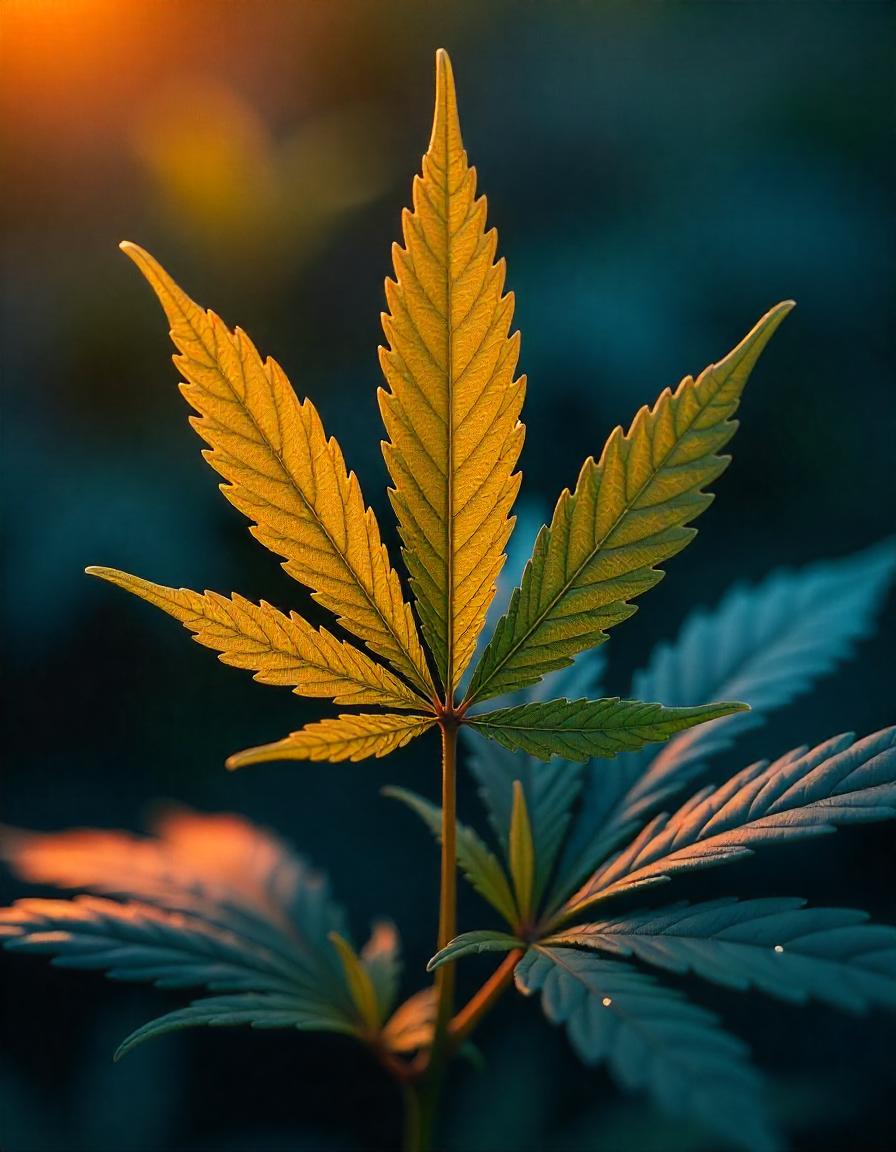
🍽️ Recipes with hemp leaves - wild, green and full of flavour
Anyone who thinks hemp leaves only belong in a teapot is missing out on a world of possibilities, because in the kitchen they show what they are really made of: subtle flavours, surprising freshness and a hint of wild nature that turns every dish into something special.
A classic among hemp fans is green pesto. Simply mix a few fresh or dried hemp leaves with garlic, nuts, oil and a little lemon juice - and you have a flavourful all-rounder that takes pasta, bread or baked vegetables to a whole new level. The taste is a little reminiscent of rocket, but with a more bitter, almost earthy undertone. Perfect for anyone who likes it natural.
Smoothies also get an extra kick with a few hemp leaves. They not only provide nutrients, but also a beautiful green colour and a slightly grassy aroma - ideal in combination with banana, apple or ginger. And if you like it a little more unusual, you can even try hemp leaves in biscuits, dips or soups. Here you can play, try and combine wildly.
A little tip for anyone who wants more than just flavour: if you want to activate the effects of THC or CBD, you need to "decarboxylate" the leaves beforehand - in other words, heat them in the oven at a low temperature, for example. Only then does THCA really become THC - the substance that provides the psychoactive effects in Flowers. However, this effects is barely noticeable in industrial hemp, but it remains legal and gentle.
Cooking with hemp leaves is a bit like cooking with wild herbs: you don't need much, but if you do it right, every dish becomes a little adventure. And that's exactly what makes it so appealing - green, healthy and guaranteed not to be boring.
❓ Frequently asked questions about hemp leaves
No - at least not in the form known from cannabis flowers. Hemp leaves usually only contain very small amounts of THC, especially if they come from legal industrial hemp. A psychoactive effects is therefore hardly noticeable or not noticeable at all. Instead, they offer other benefits, such as CBD or antioxidant plant substances.
They are most commonly brewed as tea, but they are also used in the kitchen or for cosmetic products. Those who like to be creative can mix them into smoothies, make a pesto from them or use them as an ingredient in herb butter - ideal for anyone who loves natural ingredients.
Hemp leaves from industrial hemp are legal in Germany and available online, in health food stores or directly from organic hemp farmers. Important: Pay attention to the origin, organic certification and that the THC content is below 0.2 % - only then is it safe to buy.
If stored correctly - i.e. airtight, cool and protected from light - dried hemp leaves will keep for several months, sometimes even up to a year. However, as soon as they smell musty or appear crumbly and dusty, you should replace them.




